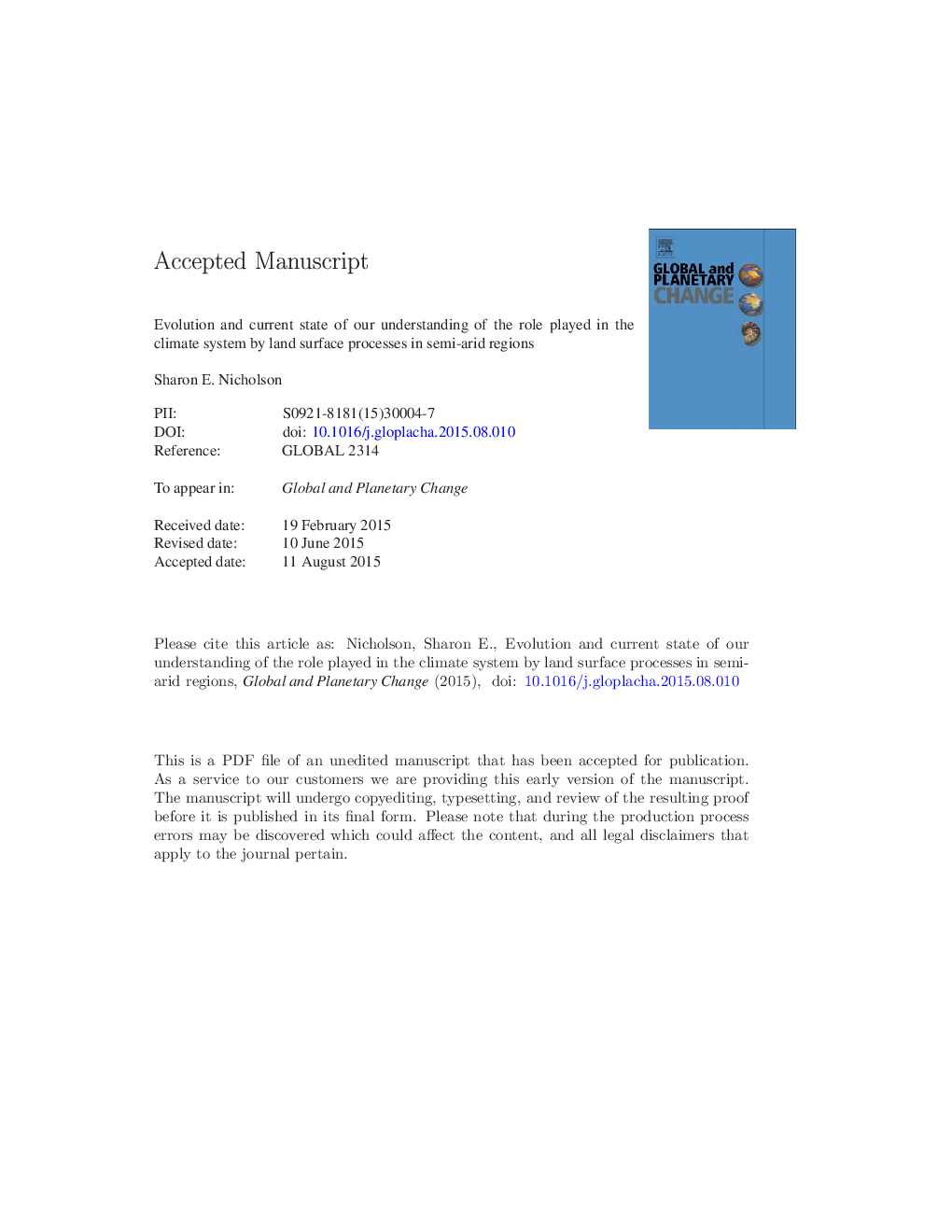| Article ID | Journal | Published Year | Pages | File Type |
|---|---|---|---|---|
| 6348066 | Global and Planetary Change | 2015 | 116 Pages |
Abstract
The role of the land surface in climate and weather has been a major research focus since the 1970s. Since that time our understanding of the issue has greatly changed and many new themes in several disciplines are being considered. This article summarizes the changes in our understanding that have taken place in research on this topic and reviews principally papers that have appeared in the last two decades. Several other papers provide comprehensive reviews of literature that appeared prior to that time. The major changes that have occurred include 1) more sophisticated and rigorous analysis of desertification, 2) increased emphasis on hydrological processes, including the role of groundwater, 3) use of multi-model ensembles and regional models, 4) the emergence of the domain of ecohydrology, with emphasis on detailed feedbacks between water availability and vegetation, 5) examination of the hypothesis that vegetation feedback can produce abrupt climate change, 6) emphasis on the impacts on convective or synoptic-scale systems, and 7) consideration of the impact of aerosols, including the Saharan Air Layer. With the exception of desertification, each of these topics is reviewed.
Keywords
Related Topics
Physical Sciences and Engineering
Earth and Planetary Sciences
Earth-Surface Processes
Authors
Sharon E. Nicholson,
